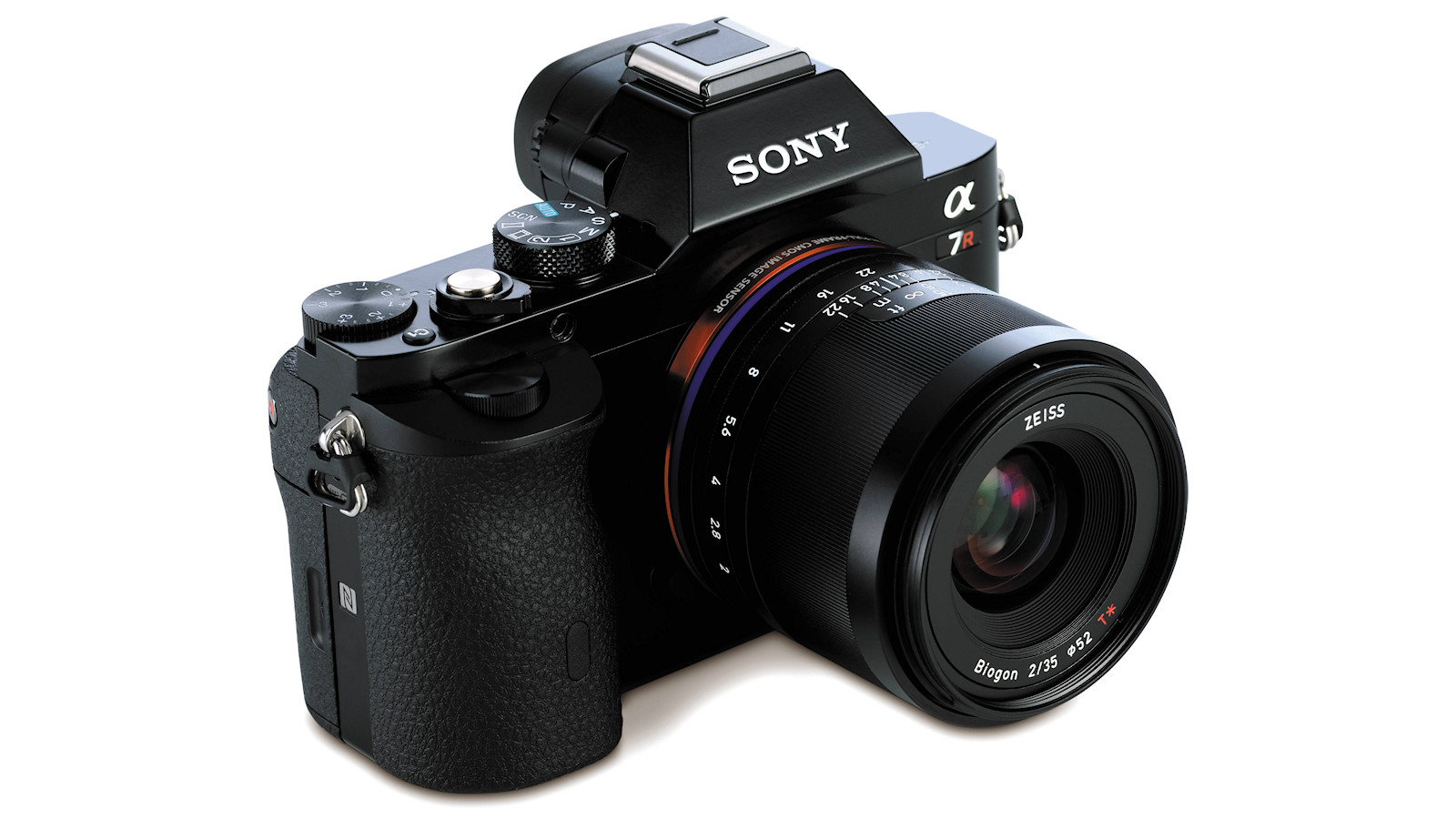
The Zeiss Loxia 35mm F2 certainly ticks a box on my wish list. The moderately wide perspective of a 35mm lens on a full-frame camera is often favored for street photography. Historically, photographers specializing in the genre would focus manually, using a lens’s focus distance scale and depth of field markers to set the ‘zone’ of a scene that would be rendered sharply. That takes any time involved for autofocus or manually focusing out of the equation, so you can snap up a defining moment the instant you see it. The flip side is that the vast majority of recent autofocus lenses have neither a focus distance scale nor any depth of field markers, making zone focusing impossible.
Specifications
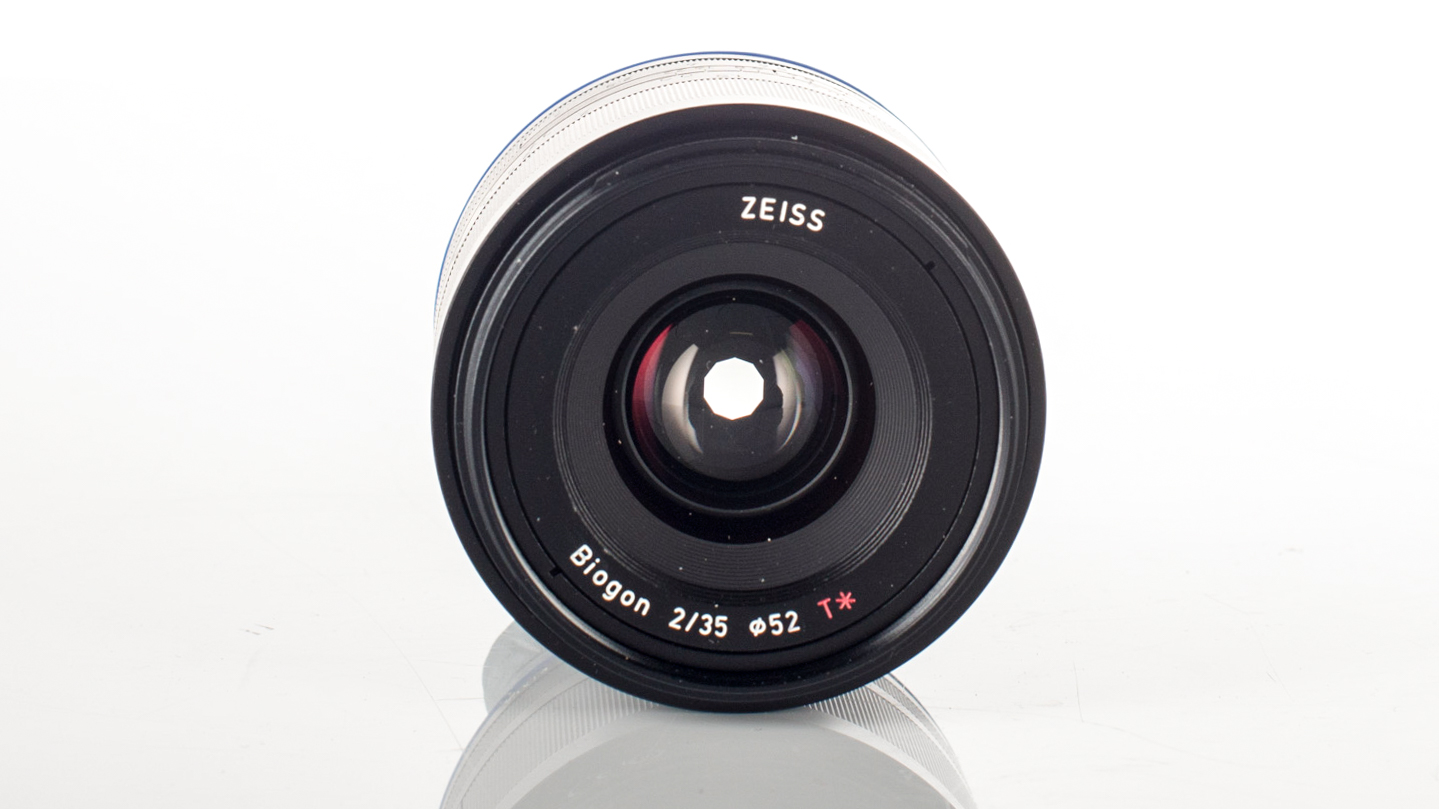
Key features
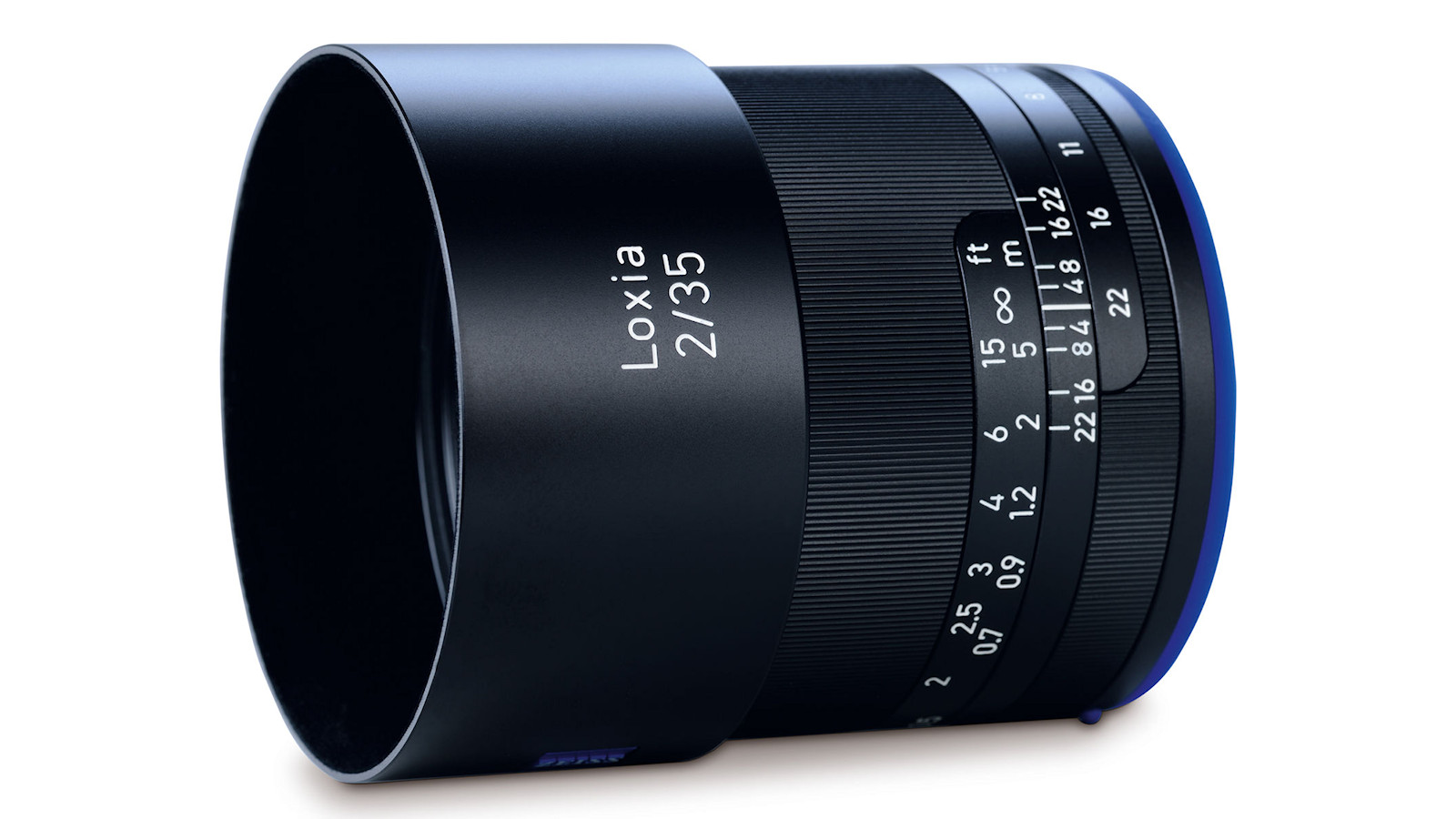
Like other Loxia lenses in the Zeiss family, the 35mm is a manual-focus lens but has all the necessary electronics for full communication with the host camera. As such, in-body image stabilization is automatically available with all but the first generation of Sony Alpha full-frame cameras, for which this lens is designed.
Focusing itself is actually a joy. The rubberized control ring has an immensely smooth and fluid feel, along with a long 180-degree throw that enables very fine and precise adjustments. Depth of field markers are on hand for apertures of f/4, f/8, f/16 and f/22. A further refinement, in common with other Loxia lenses, is that the aperture control ring comes complete with a click/de-click mechanism, spreading the joy to movie capture as well as stills. A small key is provided for engaging or disengaging the click-steps, although you have to remove the lens from the camera to get at the operating slot, which is situated in the mounting plate.
Based on Zeiss’s tried and trusted Biogon optical design, the lens features 9 elements arranged in 6 groups, including one low dispersion element. Build quality is everything I’d expect from Zeiss, with a super-solid metal casing and mounting plate, backed up by an extensive set of weather-seals. Like all other lenses in the Loxia family, the this one features a uniform 52mm filter attachment thread, and comes complete with a bayonet-fit hood.
I also like the compact and lightweight nature of the lens, which makes it perfect for street photography when I’m trying to shoot candidly without drawing attention to myself.
Performance
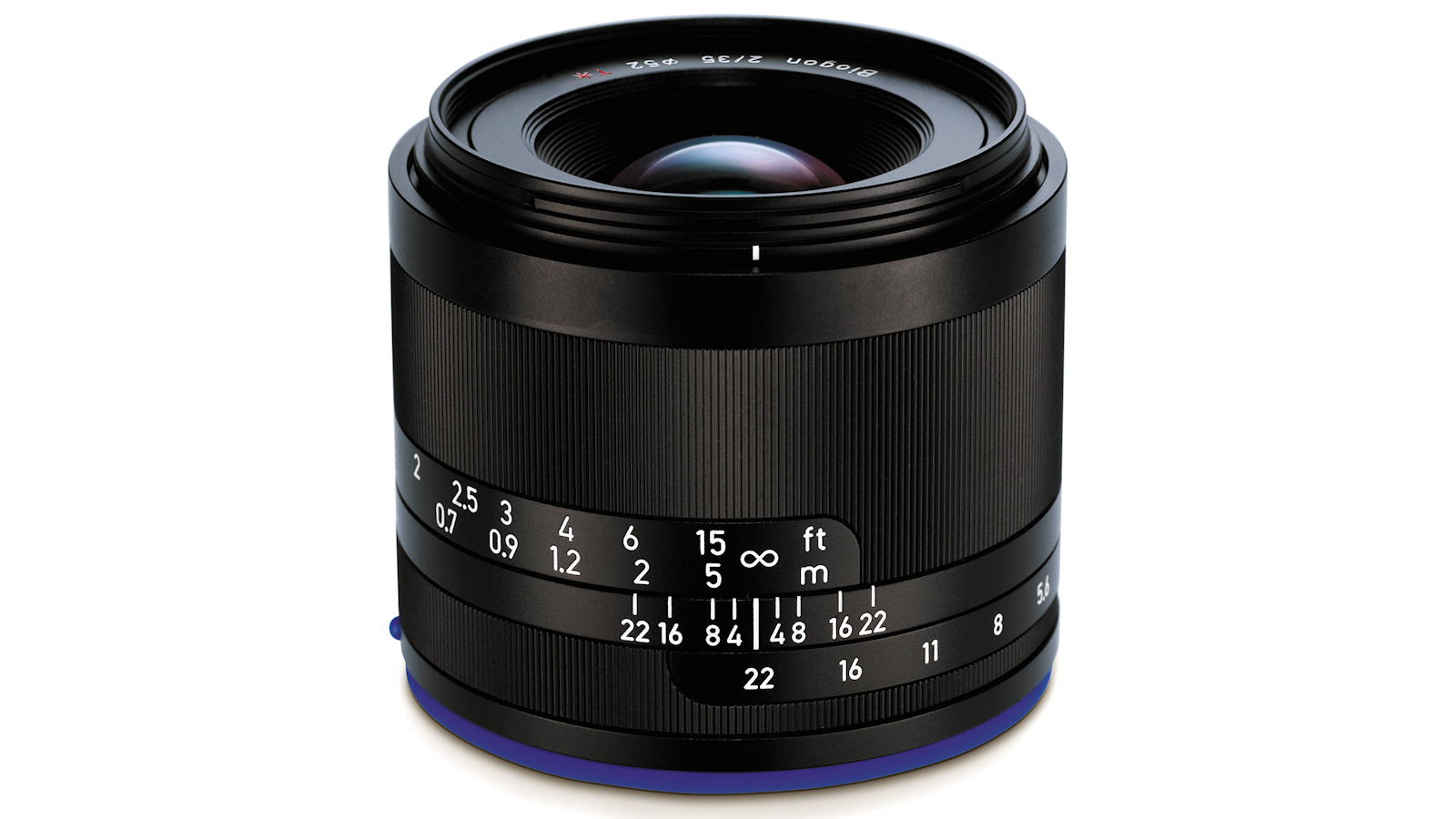
Helped by the longstanding Zeiss T* Anti-Reflective Coating, the lens delivers crisp images with faithful color rendition and excellent sharpness, with very good resistance to ghosting and flare. Sharpness away from the central region of the frame is a bit mediocre when shooting wide-open at f/2 but improves at f/2.8, while extreme edge/corner-sharpness really hits its stride at f/5.6. I’m perfectly happy with that, as I tend to shoot at f/5.6 or narrower apertures for a decent depth of field, when I want really good edge-to-edge sharpness.
Other facets of image quality are highly impressive, with negligible color fringing even at the extreme corners of the frame, and very minimal barrel distortion.
Lab results
We run a range of lab tests under controlled conditions, using the Imatest Master testing suite. Photos of test charts are taken across the range of apertures and zooms (where available), then analyzed for sharpness, distortion and chromatic aberrations.
We use Imatest SFR (spatial frequency response) charts and analysis software to plot lens resolution at the center of the image frame, corners and mid-point distances, across the range of aperture settings and, with zoom lenses, at four different focal lengths. The tests also measure distortion and color fringing (chromatic aberration).
Sharpness:
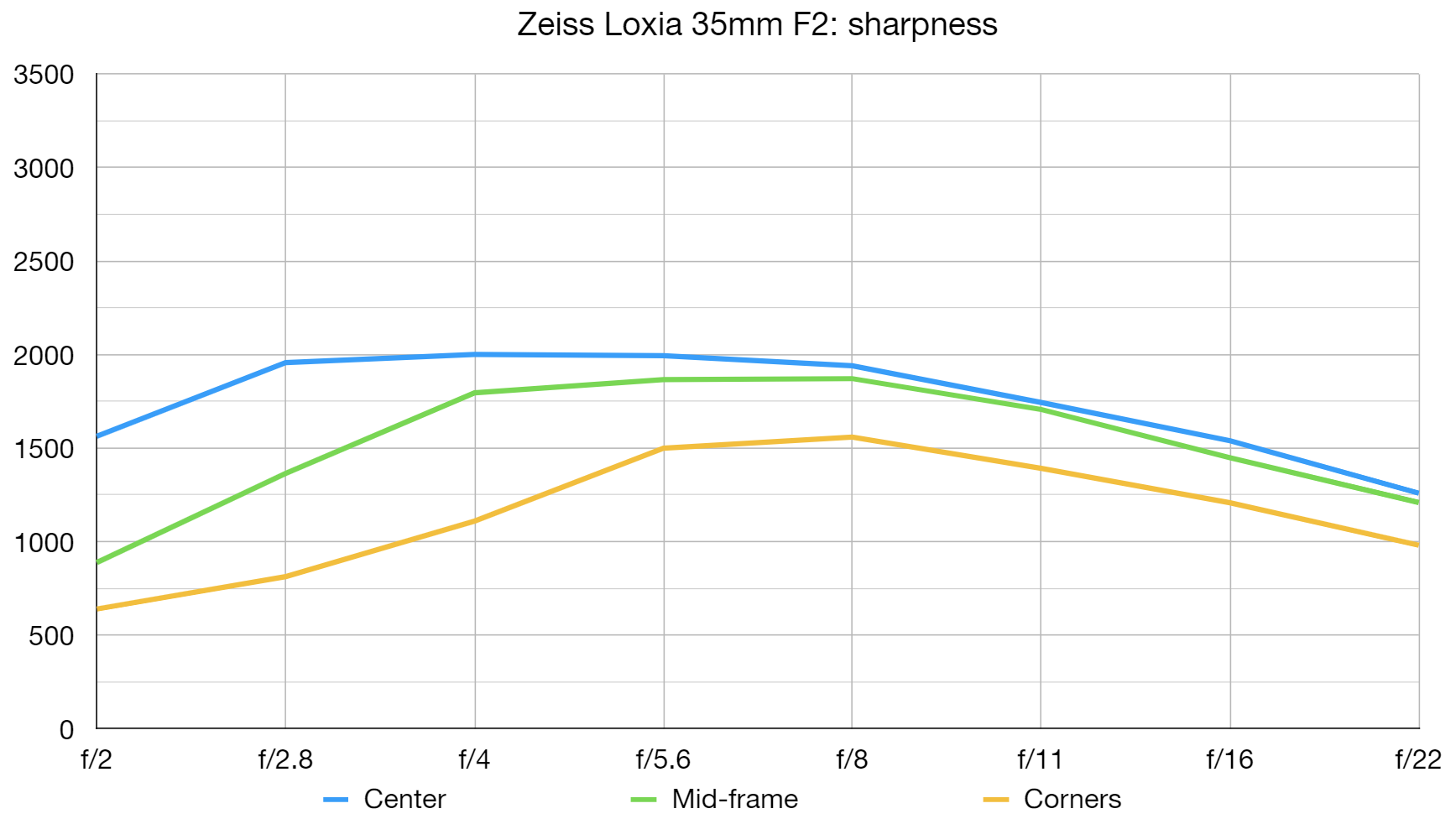
The central region of the image frame is plenty sharp enough even wide-open at f/2, but it pays to stop down to f/5.6 if you need really good sharpness right out to the extreme edges and corners of the frame.
Fringing:
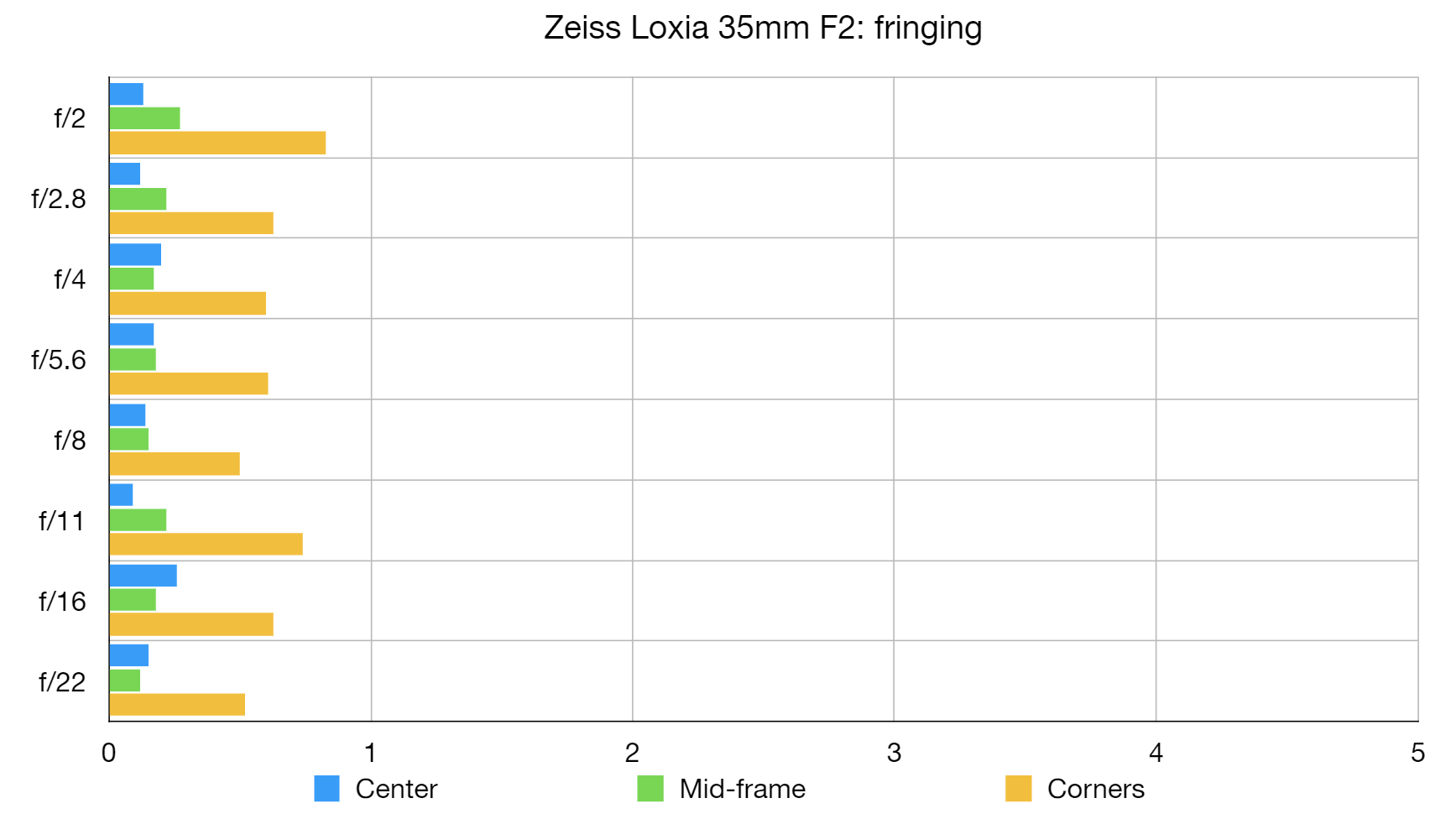
Without any need for automatic in-camera correction (available in Sony cameras) color fringing is all but impossible to spot, even out towards the corners of the image frame.
Distortion: -0.17
The tiny amount of barrel distortion revealed in our lab tests will generally go completely unnoticed in real-world shooting.
Verdict
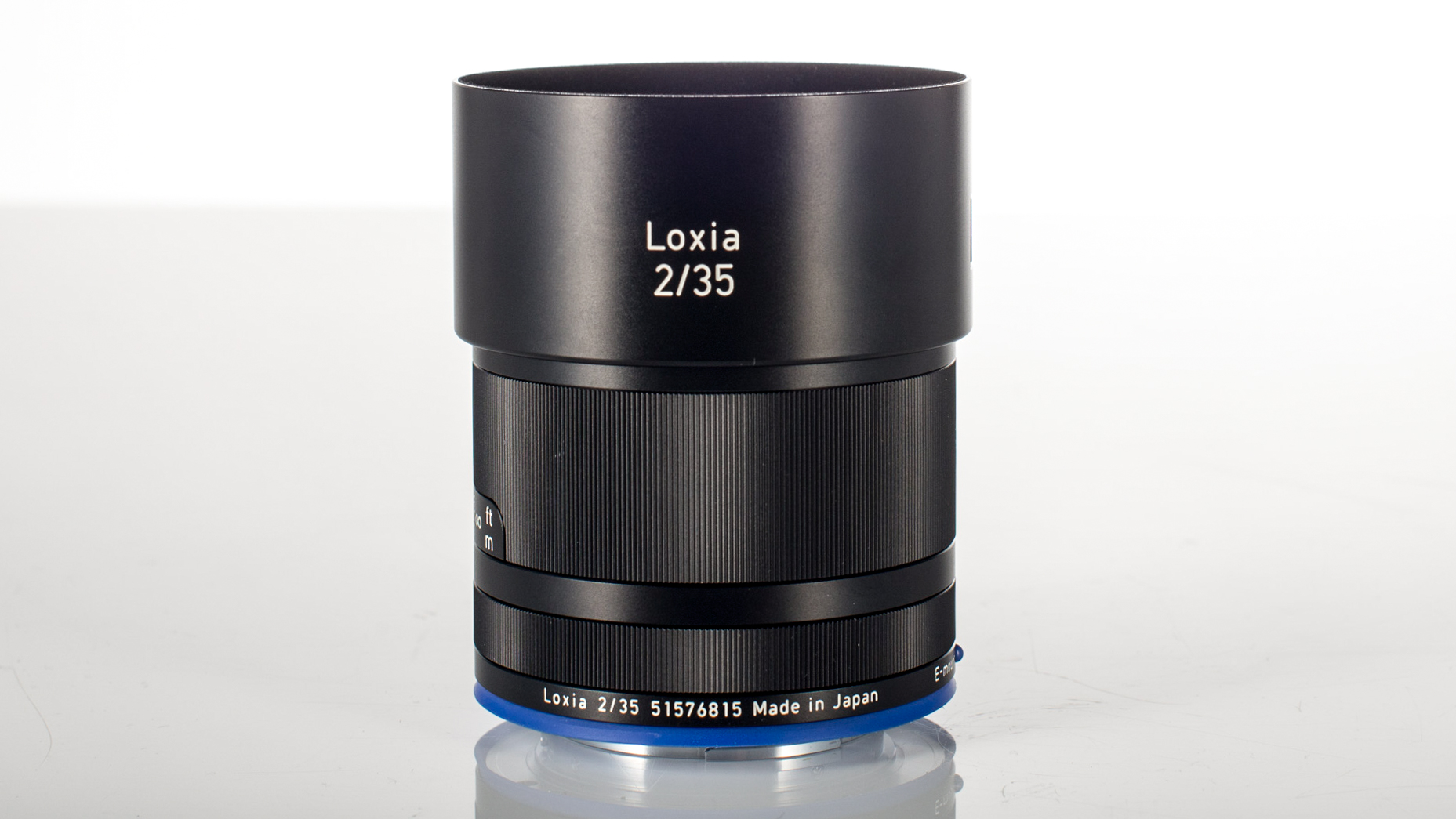
I find that the Zeiss Loxia 35mm F2 has an ideal focal length for street photography. As a manual-focus lens with a focus distance scale and depth of field markers, it’s also ideal for ‘zone focusing’, so I can pre-focus and shoot at will, helping me to avoid missing definitive moments. Image quality is lovely, with the exception that edge-sharpness could be better at wide apertures.
- Other Zeiss lens reviews
- Zeiss Loxia 21mm f/2.8 review
- Zeiss Batis 18mm f/2.8 review







